The Mass
Explained to Children
THE MASS
Explained to Children
By
Maria Montessori
Foreword
by the Reverend
Matthew A. Delaney

Angelico Press reprint edition 2015
This Angelico edition is a republication
of the work originally published in 1933
by Sheed & Ward
All rights reserved
No part of this book may be reproduced or transmitted,
in any form or by any means, without permission
For information, address:
Angelico Press
4709 Briar Knoll Dr.
Kettering, OH 45429
978-1-62138-119-8 pb
978-1-62138-120-4 ebook
NIHIL OBSTAT: INNOCENTIUS APAP, S.TH.M., O.P.
CENSOR DEPUTATUS
IMPRIMATUR:  JOSEPH BUTT,
JOSEPH BUTT,
VIC. GEN.
WESTMONASTERII, DIE XXA JUNII, MCMXXXII
Cover Design: Michael Schrauzer
CONTENTS
O NE OF THE MOST significant trends in recent Church History has been the interest aroused in the Liturgy under the leadership of the Popes themselves. The Pope would have everybody share actively in the Liturgical life of the Church which expresses her worship of her Divine Master. And above all does he want every Christian to exercise his holy priesthood by actively participating in the supreme Liturgical act, the Mass.
This should come easily to the keen perceptions of children when they understand and value what the Mass really is. Doctor Montessori brings this home to them in her simple and accurate explanation which achieves the aim modern pedagogy would attain: it stimulates the interest of the child as an individual and brings him to think and to pray as a child does instinctively when he is really interested and not merely dragooned.
The children who use this book are indeed fortunate in thus having presented to them the fascinating action of the Mystery of Faith.
MATTHEW A. DELANEY
March 25, 1933
T HE RELIGIOUS EDUCATION of children took a great step forward when it was extended to the Liturgy, and an endeavor was made to teach the child how to follow ritual intelligently.
Since then the Missal for childrens use and the method of teaching them how to take part in the Mass have become just as important factors in their religious education as the teaching of the catechism; whereas the latter was the only instruction they received up to the great reform of Pope Pius X.
Unfortunately, however, in putting this progress into practical effect the old-fashioned methods of education have been followed: adults still maintain towards children the same old misunderstanding of their character. They still think it necessary to interfere with them, continually and directly, to keep them from doing harm; and teachers imagine that the child is incapable of good without their exhortation or example. People had that idea, too, in the time of Christ; when children ran to the Divine Master they were pulled back by their elders, so that Our Lord had to rebuke them: Suffer the little children to come unto Me. Moreover, this incident aroused Christ to a passing severity and He made it an opportunity for one of His divine revelations: I say to you, unless you be converted, and become as little children, you shall not enter into the Kingdom of Heaven.
Our Lord perceived in children something that the adult did not perceive two thousand years ago and does not perceive today. Yet the Gospel says plainly that many mysteries shall be revealed to these little ones.
Christs teaching about children touches the very core of their education; they have a different personality from ours, and spiritual impulses are alive in them which may be atrophied in the grown man.
We must always keep this fact in mind so that we may be prepared not only to offer children the noblest teaching, but to offer it in a worthy form.
We are bound to help children by teaching them what they need to know about religion, but we should not forget that the child can help us, too, by showing us the way to the Kingdom of Heaven. A great respect for the individuality of the child should be part of our deepest Christian thought; and putting this thought into practice should tend to the personal refinement of every religious teacher. There is much to be hoped from the spirituality of children. It is well to remember that during the Great War His Holiness Pope Benedict XV sent out a printed bull to be hung up in all the churches to be read by the faithful, and at the head of it he put these words: I beg the dear and all-powerful children to hold up their hands for me at the altar.
T HEREFORE , in this question of the liturgical education of children it is very important for us not only to teach them what they must know, but to lift ourselves to a much more sensitive frame of mind in order to be able to teach it.
It must be confessed that we adopt anything but the right attitude. It is a commonplace experience to listen in church to the rough and even abusive way children are admonished. Some lay masters lead files of children into church, rapping out orders to them like a corporal to a squad of new recruits: Kneel down! No, not like that, all together! Or one sees a teacher actually taking the children by the shoulders and placing them one by one in the benches, just as if she were packing fruit into baskets.
Another obvious mistake is to teach them during the Mass.
How often today one meets with those pious persons in church, who have taken on the work of conducting and teaching groups of children during Mass; and these children often include big boys, who at school are perhaps already learning algebra or the plays of Shakespeare. Even at the Consecration, during those moments of silence and recollection, one hears the voice of the zealous teacher raisedmore often than not an unmusical and expressionless voicedroning out explanations, as though fulfilling a dry duty. The lesson over, a sharp Sit up! shoots all those young bodies upright again, and in those childrenwith the best intentions in the worldevery spiritual impulse is thus stifled.
A somewhat similar error is found in most of the Prayers at Mass in books compiled especially for children. These books are overladen with instructions both in the text and in the pictures; so that they take up the childs whole attention and absorb all his energy. The reader of these little books must attend to the pictures, showing the position of the priest: now at the right of the altar, now turned towards it, now turned towards the people, and so forth; and the child must find the words of the text corresponding with those attitudes. In addition to all that, many of these little books contain pictures of the symbolical meaning of the various actions forming part of the rite; this represents the birth of Jesus, this His preaching, this His death and burial, and so on. Now we all know by experience how hard it is to follow Mass faithfully, even after years of practice, when we almost know the words by heart. How, therefore, can it be possible to follow it and learn it at the same time?
Is not the aim of the Mass to make us share in its mysteries, by yielding up the soul to God, in such recollection as is possible only by liberating our minds for a little while from all exterior distractions? This is the very reason why, in the first ages of Christianity, the catechumens were dismissed at the beginning of the Mass of the Faithful. One did not go to this part of Mass for instruction, which is an exterior thing; one went there to be united to Jesus Christ in the most intimate offering of the soul. Instruction in and sharing in the mysteries were seen to be two very different things, and were kept separate.
Next page
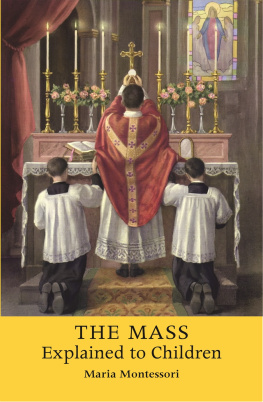
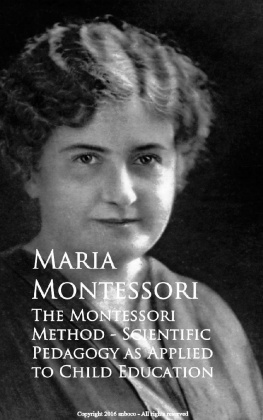
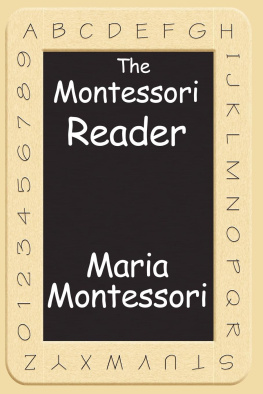
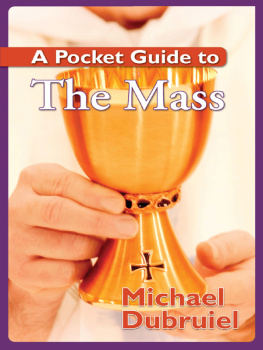
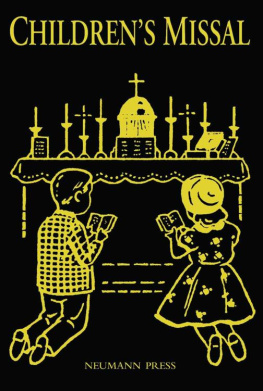
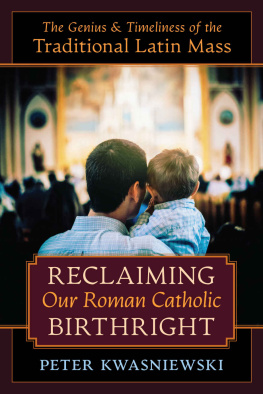
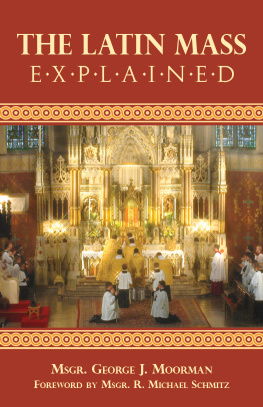

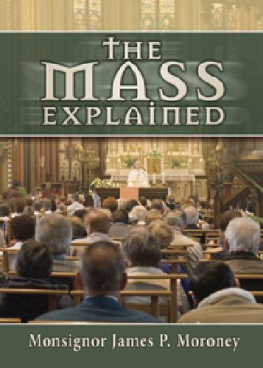
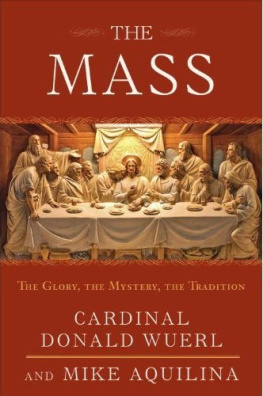

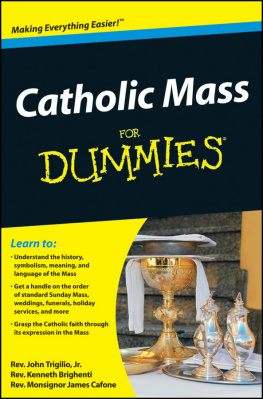

 JOSEPH BUTT,
JOSEPH BUTT,